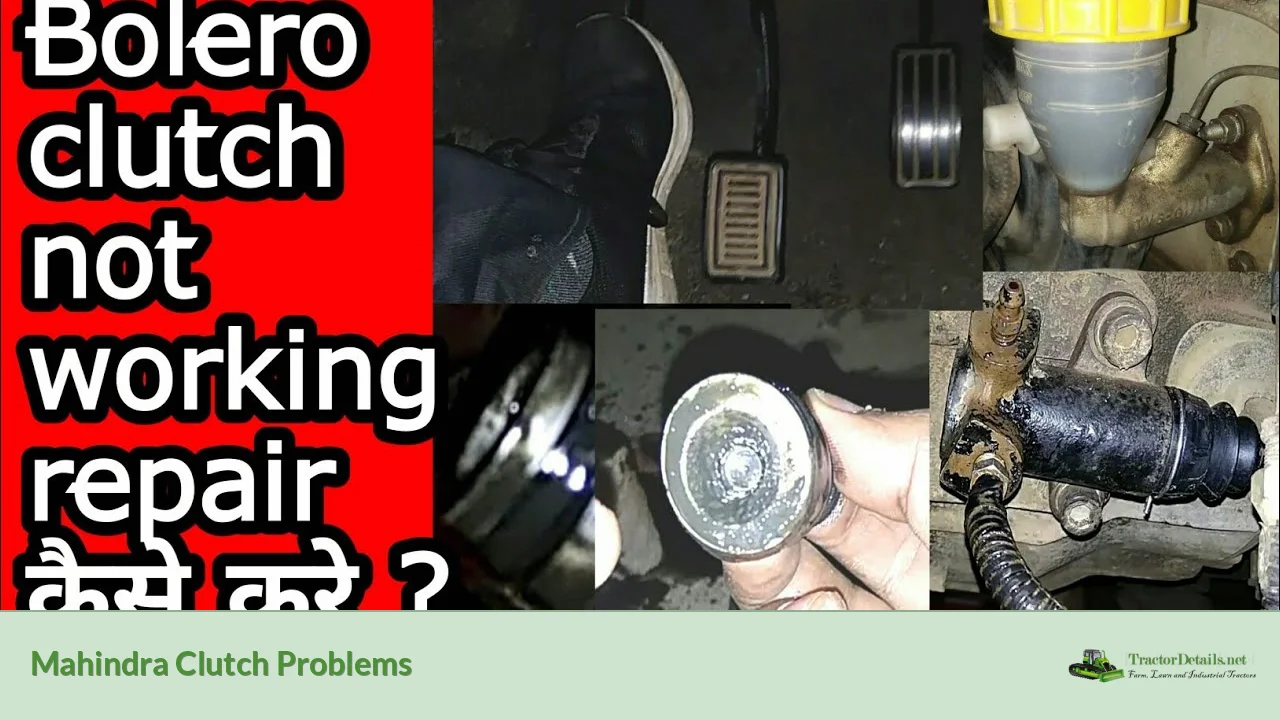Mahindra vehicles, known for their rugged performance and reliability, can sometimes experience clutch problems that can lead to significant issues in vehicle operation. Understanding these problems is paramount for Mahindra owners to maintain performance and safety. This article will delve into Mahindra clutch issues, offering insights and solutions to keep your vehicle operating smoothly.
Key Takeaways
- Clutch problems in Mahindra vehicles can lead to poor performance and driving difficulty.
- Common symptoms include slipping, difficulty in gear engagement, and unusual noises.
- Regular maintenance can help prevent major clutch problems.
- DIY troubleshooting can often diagnose issues before they escalate to costly repairs.
- Professional help might be necessary for severe or complex issues.
| Symptoms | Possible Causes |
|---|---|
| Slipping clutch | Worn clutch disc |
| Difficulty engaging gears | Faulty slave or master cylinder |
| Unusual noises while shifting | Damaged throw-out bearing |
| Diaphragm spring issues | Misaligned clutch alignment |
| Low hydraulic fluid | Leaks in the hydraulic system |
Problem Description
Clutch issues in Mahindra vehicles typically manifest as a compromise in the vehicle's ability to engage or disengage the engine from the transmission. The clutch system uses friction to connect or disconnect these two systems and is vital for smooth gear transitions. Clutch problems can lead to severe vehicle operational issues, affecting safety, performance, and fuel efficiency.
Common Symptoms
Mahindra owners may observe several symptoms indicative of clutch problems, including but not limited to:
- Slipping Clutch: The engine revs without a corresponding increase in vehicle speed, indicating a worn clutch disc.
- Difficulty Engaging Gears: Struggling to shift gears can suggest problems with the hydraulic system or clutch components.
- Unusual Noises: Grinding, squeaking, or chattering noises during shifting may point to worn or damaged components.
- Increased Pedal Resistance: A significantly harder or softer clutch pedal can indicate hydraulic or mechanical issues.
- Vibration: Excessive vibration during gear shifts might suggest that components are misaligned.
Possible Causes
Understanding the causes behind these symptoms can aid in diagnosing the clutch issues effectively:
- Worn Clutch Disc: Over time, the friction material on the clutch disc can wear out, leading to slippage or difficulty shifting.
- Faulty Slave or Master Cylinder: If the hydraulic system is compromised, the clutch may not disengage completely.
- Damaged Throw-Out Bearing: A failing bearing can cause noise and hinder proper clutch function.
- Misalignment: Improper alignment of the clutch assembly can result in engagement issues and vibrations.
- Low Hydraulic Fluid: A decrease in hydraulic fluid level due to leaks can impair clutch performance.
Diagnosis Steps
To accurately diagnose clutch problems in your Mahindra vehicle, follow these steps:
- Visual Inspection: Check for visible leaks from the hydraulic system and inspect the condition of the clutch pedal.
- Listen for Noises: Pay attention to any unusual sounds when engaging the clutch.
- Test Drive: Perform a few drives in different conditions to identify symptoms like slippage or difficulty in shifting.
- Check Fluid Levels: Ensure that the hydraulic fluid levels are adequate; low levels may indicate leaks.
- Scan for Error Codes: Use an OBD-II scanner to check for any error codes related to the transmission or clutch.
Troubleshooting and Repair Procedures
To resolve clutch issues, it’s essential to conduct thorough troubleshooting. Here’s a guide for DIY enthusiasts:
-
Clutch Slipping:
- Inspect the clutch pedal for proper adjustment.
- Check the condition of the clutch disc; a replacement may be necessary if worn out.
-
Gear Engagement Issues:
- Inspect the hydraulic lines for leaks and connection issues.
- Bleed the hydraulic clutch system to remove any air entrapment.
-
Unusual Noises:
- Replace the throw-out bearing if damaged or noisy.
- Check for any misalignment in the clutch setup.
-
Pedal Pressure Variations:
- Ensure the clutch linkage is properly adjusted.
- Check the master and slave cylinders for wear.
Estimated Repair Costs
The cost of repairing clutch problems in Mahindra vehicles varies based on the extent of the issue. Here is a general outline of potential costs:
- Clutch Replacement: $800 - $1,500 (parts and labor)
- Slave/Master Cylinder Replacement: $150 - $400 (parts and labor)
- Throw-Out Bearing Replacement: $100 - $300 (if replaced with a clutch service)
- Hydraulic Fluid Replacement: $50 - $150 (parts only)
Prevention Tips
To prevent clutch issues from arising in the first place, consider the following tips:
- Regular Maintenance: Schedule regular inspections for the clutch system and replace worn components as needed.
- Proper Driving Habits:
- Avoid riding the clutch.
- Shift gears smoothly and at appropriate RPMs.
- Use Quality Parts: When repairs are required, always opt for manufacturer-recommended parts for longevity.
- Monitor Clutch Fluid: Check hydraulic fluid levels regularly and replace as necessary to avoid contamination or leakage.
When to Seek Professional Help
While many clutch issues may be addressed through DIY methods, certain situations warrant professional assistance:
- Persistent Symptoms: If problems persist despite troubleshooting, a professional diagnosis is essential.
- Complex Repairs: Issues involving internal transmission components or severe damage may require expert intervention.
- Lack of Tools/Experience: If lacking the right tools or experience, consulting with a certified mechanic can save time and potential further damage.
Conclusion
Clutch problems in Mahindra vehicles can affect overall driving performance and safety if not addressed promptly. Understanding the symptoms, causes, and repair procedures empowers owners to take effective action and make informed decisions. Regular maintenance, proper driving habits, and timely repairs are key to a long-lasting clutch system. For severe issues or persistent symptoms, do not hesitate to seek professional help to ensure that your vehicle remains reliable and proficient on the road. By being proactive, Mahindra owners can enjoy a trouble-free driving experience for years to come.Sure! How can I assist you today? If you have a specific topic or question in mind, feel free to share it!
